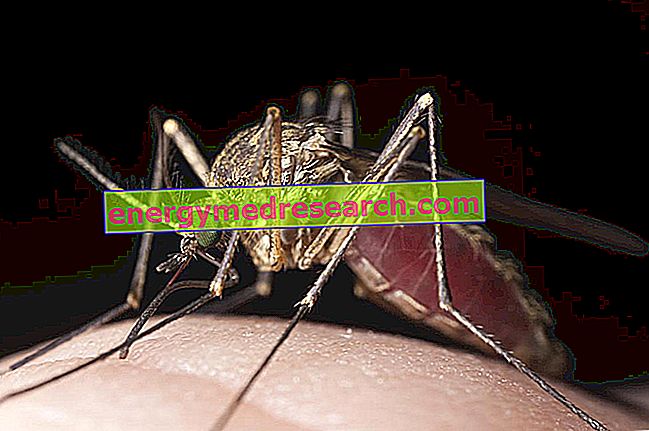Symptoms

When you touch the fur or the feathers of pets or inhale the allergens, in the event of hypersensitivity the following reactions may arise:
- Allergic rhinitis: repeated sneezing, coughing, runny nose or nasal congestion;
- Itching of the nose, palate or throat (in the child there is a frequent tendency to rub towards the top of the nose);
- Ocular symptoms: itching of the conjunctiva, swelling, redness and profuse tearing (allergic conjunctivitis);
- Sense of tiredness and general malaise;
- Pain and pressure on the face.
Other symptoms that may appear in association with the onset of asthma are:
- Difficulty breathing and wheezing;
- Sense of tightness in the chest or pain;
- Sleep disorders caused by shortness of breath, coughing or wheezing.
Some allergy sufferers may also have skin symptoms : direct contact with a pet can trigger cutaneous manifestations (hives, dermatitis or eczema), with itchy rashes and red spots.
Complications
- Increased susceptibility to other airway diseases;
- Inflammation, acute or chronic, of the mucous membranes of the paranasal sinuses, such as sinusitis;
- Ear infections (otitis);
- Sleep disorders and insomnia;
- Worsening of asthma.
What makes the symptoms worse? Polluted air and tobacco smoke can contribute to the onset of an asthmatic crisis. Even any other allergens present in the environment (example: pollens) can aggravate the patient's condition. The impact of pollen allergy can be evident as it is seasonal and you may have more difficulty managing your symptoms for only a short time, limited to pollination. On the other hand, exposure to animal allergens can occur throughout the year, even if you do not have a pet, as they may be present in other homes or transported to clothes at work or school. Often, it is extremely difficult to avoid allergens that may come from other people's animals. For example, a school class may have high levels of animal allergens.
Diagnosis
If you experience nasal congestion, sneezing, wheezing, breathing difficulties or other symptoms that may be related to an allergy, it is advisable to consult your doctor. An allergy to a pet can be suspected on the basis of the allergic event, the physical examination and the information reported by the patient. Often, it is enough for the doctor to know when and where the subject presents the symptoms. Skin tests and analyzes on blood samples can then confirm the suspected diagnosis.
The patient, before the medical examination, can:
- Write down all the symptoms that have occurred, including those that may seem unrelated to allergy.
- Report whether other family members suffer from certain types of allergy and asthma.
- Write a list of all the drugs you are taking.
- Ask your doctor if you need to stop taking the drugs that can change the outcome of allergy tests, such as antihistamines or cortisone drugs.
In the meantime, if an allergy is suspected, it is useful to take measures to reduce exposure to pets: keep them out of the bedroom, away from upholstered furniture and wash their hands immediately after touching them.
Physical examination
After collecting the medical history information, the doctor can examine the mucous membrane of the nose: in case of an allergy, the lining of the nasal passage may be swollen, appear pale or bluish. The doctor can advise the patient to consult an allergist to carry out extensive tests, on the skin or through blood tests, which allow for the exact identification of the allergen causing the symptoms, defining the severity of the allergic disease and obtaining a definitive diagnosis.
Skin test (Prick test)
Small amounts of purified allergens, including animal protein extracts, are placed in contact with the skin of the forearm and subsequently the area is punctured with a sterile lancet. If the test is positive, after about 15 minutes we see the appearance of a characteristic wheal surrounded by a red area, a sign that reveals the sensitivity to the allergens considered. If you are allergic to cats, for example, you may develop swelling, itching and redness at the respective puncture area (where the related extract was applied).
The Prick test is reliable, easily executable and completely painless. The examination can give staggered results if it is performed in the presence of skin diseases or when the person is following a treatment with antihistamines or cortisone drugs.
Total IgE (PRIST) and specific dosage (RAST)
In some cases, a skin test cannot be performed due to the presence of a particular skin condition or because of interactions with certain drugs, which could invalidate the outcome of the investigation. Alternatively, a blood test can be used to ascertain the presence of specific antibodies against the individual allergens that commonly cause allergies, including various animal-derived substances. Furthermore, this survey allows to quantify the patient's sensitivity to a specific allergenic component.
What are the prospects? Once the responsible allergens have been identified, pet owners should avoid factors that can increase the risk of developing more severe allergies and trigger asthma attacks. Symptoms can be controlled with the most appropriate drug therapy. For patients who have only one allergy, it may be possible to resort to specific immunotherapy, ie a treatment capable of progressively desensitizing the organism against the allergen.



